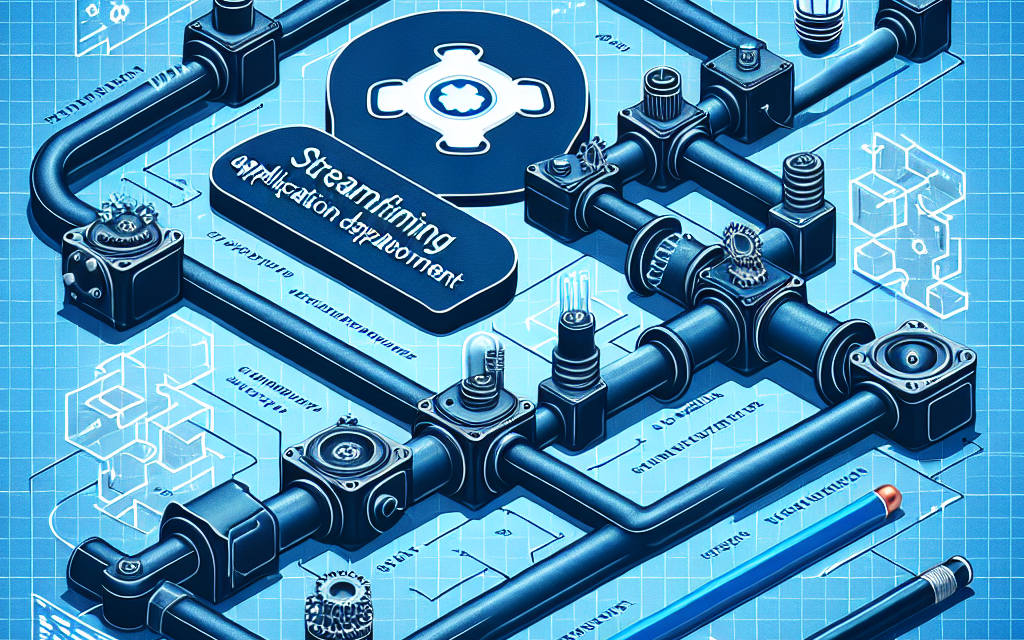In today’s fast-paced digital landscape, businesses are increasingly reliant on agile development practices and efficient application deployment strategies. As companies innovate and scale their technology stacks, the need for reliable orchestration solutions has never been greater. Enter Kubernetes—a powerful container orchestration platform that is driving the modernization of application deployment. Among its many features, Kubernetes blueprints stand out as a game changer, enabling organizations to streamline their application deployment processes.
What are Kubernetes Blueprints?
Kubernetes blueprints are essentially predefined configurations and templates that provide a set framework for deploying complex applications on a Kubernetes cluster. They encompass best practices, security policies, and architecture patterns, simplifying the process of creating, configuring, and managing Kubernetes resources. By leveraging blueprints, organizations can standardize deployment practices, reduce boilerplate code, and ensure compliance with organizational policies.
Key Benefits of Kubernetes Blueprints
-
Consistency and Standardization: Kubernetes blueprints help maintain consistency across multiple environments—development, testing, and production. By providing a well-documented and robust framework, teams can avoid deviations that often lead to inconsistencies and deployment issues.
-
Accelerated Deployment Times: Reusing blueprints can significantly speed up the deployment process. With ready-to-go configurations, developers can focus on building features rather than configuring the infrastructure. This enables organizations to foster a culture of faster innovation.
-
Enhanced Collaboration: Kubernetes blueprints act as a common language between developers, operations teams, and other stakeholders. By using a blueprint as a single source of truth, teams can collaborate more effectively and eliminate misunderstandings, leading to smoother deployments.
-
Reduced Complexity: Kubernetes can be complex, particularly for those new to the platform. Blueprints simplify this complexity by abstracting many of the intricate details involved in deployment, making Kubernetes more approachable for teams of varying skill levels.
- Security and Compliance: By embedding security practices and compliance requirements within blueprints, organizations can ensure that they adhere to organizational policies and regulatory standards from the outset of the deployment process.
How to Implement Kubernetes Blueprints
Implementing Kubernetes blueprints involves several key steps:
-
Identify Requirements: Begin by assessing the specific needs of your application and your organization’s deployment goals. Consider aspects such as scalability, performance, and security.
-
Select or Create Blueprints: Depending on your requirements, you can choose to use existing blueprints from repositories like GitHub or create custom blueprints tailored to your application needs. Tools like Helm charts and Kustomize can facilitate this process.
-
Version Control: Use version control systems, such as Git, to manage and version your blueprints. This ensures that you have a history of changes and can revert to previous configurations if necessary.
-
Testing: Before running your application in production, thoroughly test the blueprints in a staging environment. This ensures that deployments will work as expected and helps identify any issues early in the process.
-
Documentation: Maintain clear documentation for each blueprint, detailing its purpose, configuration options, and any prerequisites for deployment. This serves as a valuable resource for your team and can facilitate onboarding for new members.
- Automate Deployment: Leverage CI/CD tools to automate the deployment process using your Kubernetes blueprints. This allows for rapid iterations and updates, significantly increasing development velocity.
Real-World Applications of Kubernetes Blueprints
Many organizations have adopted Kubernetes blueprints to accelerate their application deployment processes. For instance, a financial services company may use a blueprint to deploy a high-availability microservices architecture that meets stringent regulatory requirements. Similarly, an e-commerce platform might leverage blueprints to quickly provision environments for A/B testing new features without impacting existing services.
Conclusion
As organizations increasingly shift to cloud-native architectures, Kubernetes stands out as a leading solution for orchestrating containerized applications. By leveraging Kubernetes blueprints, businesses can streamline their application deployment processes, enhance collaboration, and maintain security and compliance standards—all while fostering a culture of innovation. Adopting Kubernetes blueprints not only facilitates smoother deployments but also empowers teams to focus on what they do best: building and delivering exceptional applications that delight their users.
In the rapidly evolving world of technology, embracing tools like Kubernetes and its blueprints can provide a significant competitive advantage, allowing organizations to respond to changing market demands with agility and confidence. If your organization is looking to modernize its deployment strategies, it’s time to explore what Kubernetes blueprints can do for you.





